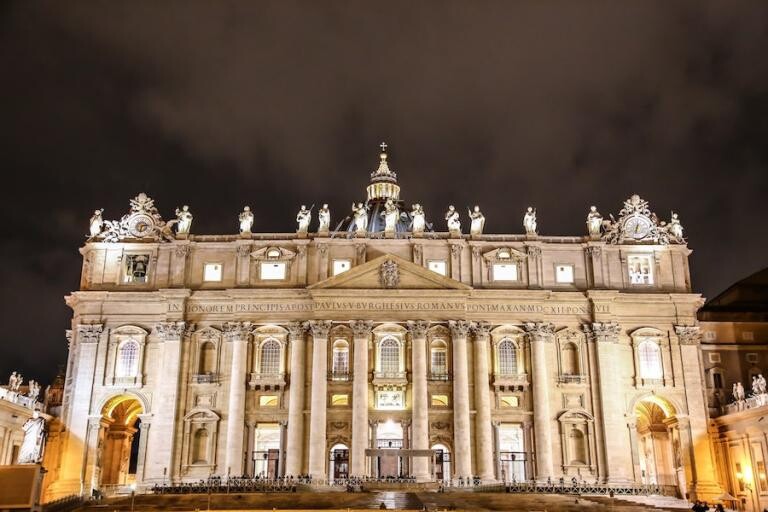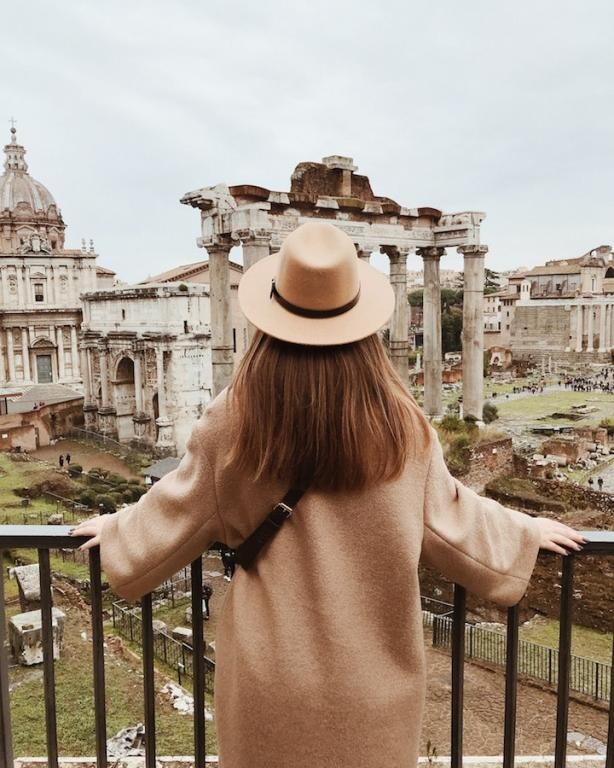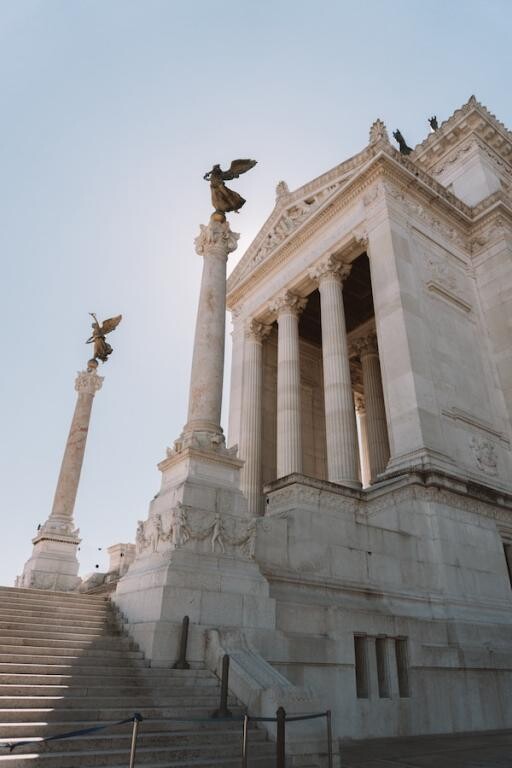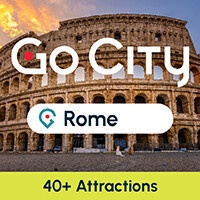They didn’t build Rome in a day, and certainly not even visited. Insideat, though have created a fantastic itinerary for those with little time and a great desire to explore the city, a balance between history, culture, a little traffic and urban art, closely observing the different souls of a city so large and so rich of shades.
If you missed the first part of this mini-guide, you can read it (HERE)
Our “fast & fun” tour continues with a tour of the city that is not at all obvious, which will make us travel between neighbourhoods, cultures time. Ready?
What to see in Rome in 48 hours: an authentic Roman tour, which begins in the past and continues up to the present day

The tour starts from a stop on line A, we are at San Giovanni metro. We just need four steps under the Aurelian walls and we are in front of the Basilica of San Giovanni in Laterano, the cathedral of Rome and the oldest of the four papal basilicas. The monumental complex of San Giovanni includes the Lateran Cloister, the Lateran Baptistery, the Lateran Palace, the Sanctuary of the Scala Santa, the pontifical university and even a very high Egyptian obelisk that invariably arouses amazement.
Is it worth going to the Basilica? Yes. Do we have time to do it today? Not if we want to fill up on things to do and see. But the beauty of travel is to move at your own pace… up to you guys
We are on one of the hills of Rome, the Celio, and going down via di San Giovanni in Laterano, in about twenty minutes we arrive straight at the Colosseum.
We continue our walk down Via dei Fori Imperiali, look around you because the view is breathtaking! The monuments that surround you are the so-called Imperial Forums, they collect a series of monumental squares built between 46 BC. and 113 AD. They are considered the centre of political activity throughout ancient Rome, in fact, over the centuries this place has been enriched with structures and buildings. Continuing our walk along this street rich in history, the first structure we meet in this sumptuous complex is the Forum of Caesar. This square built in 46 BC it has two porticos on the east and west side while at the back the temple dedicated to Venus Genetrix dominates, a show.


Are you tired already? The best is yet to come! At the end of Via dei Fori Imperiali you will find yourself directly in Piazza Venezia. This is one of the many places that over the centuries has undergone several renovations, all to adapt it to the role it covers today and which is as central as it is celebratory of the city. Haven’t you noticed it yet? Yes, I’m talking about that huge white building: the Altar of the Fatherland. In reality, its real name is National Monument to Vittorio Emanuele II or Mole del Vittoriano, but it is known to everyone as the Altare della Patria for the tomb inside it, erected in perennial memory of an Unknown Soldier who died in battle.
After taking a nice tour of the square, which connects some of the main streets of Rome, we arrive in front of a huge staircase. We are in Piazza d’Aracoeli and what you have in front of you is the famous Roman Cordonata, designed by Michelangelo Buonarroti in the 16th century. Its purpose was to unite this square to Piazza del Campidoglio and to make it easier access for men on horseback, in fact, the steps are low and very wide. Climbing the infinite steps we find ourselves right in Piazza del Campidoglio, wherein you will notice a faithful reproduction of the equestrian statue of Marcus Aurelius. This evocative square was always built by Michelangelo, who, during the construction, oriented it towards St. Peter’s Basilica, which at the time was the political centre of the city. Today it is one of the main centres of attraction also thanks to the presence of the fantastic Capitoline Museums.
But let’s not waste time that the road is full of even more interesting things to see. We continue for 650 m in the direction of Piazza della Bocca della Verità, on the right you will find the fabulous Teatro Marcello which served as a model for the construction of the Colosseum. Continuing you will arrive in front of the Basilica of Santa Maria in Cosmedin, on which in 1632 the Bocca della Verità was walled. A legend lives around this mask with a diameter of 1.75 meters, namely that you have to insert your hand into your mouth to receive fortunes and oracles but that it could bite someone’s hand at any moment. If you want to take this risk, go ahead.
In the meantime, we turn our gaze to the Temple of Hercules, exactly across the road at the intersection of Lungotevere Aventino and Via del Circo Massimo.
This circular temple was dedicated to Hercules Victor and is one of the oldest examples of the use of marble for sacred buildings in Rome. According to an ancient custom in this temple, the saying “hang on the nail” was born. In fact, gladiators were used to hanging their weapons on the walls of this temple when they decided to retire. We walk a little further to get to the imposing Circus Maximus. Made in the 2nd century BC and commissioned by Gaius Julius Caesar, it was the largest entertaining structure ever built by man. At the time there were chariot races. Nowadays all kinds of concerts are organized. You can cross it or enjoy it from the side streets that run along.
The time to stop has not yet come, head towards the entrance to Metro B and get off at the Garbatella stop. We are going outside the center of Rome to make you enjoy more local neighbourhoods. One of these is precisely Garbatella, also known as the “village district” rich in history, curiosities and wonderful views that even served as the backdrop to one of Pasolini’s novels. A district completely different from the rest of the city but which jealously preserves its identity and Romanity.
Always remaining in the area we will find another characteristic district of Rome which is San Paolo. The latter is part of the most famous area of Ostiense and enjoys a certain reputation among the liveliest and busiest neighborhoods in the capital. Now head towards Piazza San Paolo to quickly admire the Cloister of San Paolo Fuori Le Mura and enter Parco Shuster.
Leaving the park and continuing straight on along Via Ostiense you will meet the Centrale Montemartini, an extraordinary example of the conversion of an industrial archaeology building into a museum, it was in fact the first Roman public power plant. Going straight ahead for 600 m you will cross on the left one of the most colourful and characteristic streets of Rome: Via del Porto Fluviale. A small street that has a lot to say and show. Undisputed pole of street art, it enjoys works by famous artists from different parts of the world. A magical, almost surreal place that was the backdrop to the work “The ignorant fairies” by the great director Ozpetek. Approaching the Tiber again and continuing with our walk we will arrive in Testaccio, one of the most characteristic neighbourhoods of popular Rome. Here there are great references for industrial architecture such as the Slaughterhouse, which later became the seat of one of the largest museums of contemporary art, the MACRO.
Let’s head to the nearest metro station which is next to the Pyramid of Cestius. A pyramid in Rome will you say? Yes, and it is the tomb of Caio Cestio, a Roman nobleman who expressed the desire to have the tomb in this particular form.
We take the Metro B for a few stops and get off at Cavour station. We arrived in Monti, one of the most popular neighbourhoods in Rome. Characterized by narrow alleys, artisan shops, art galleries, small squares and old buildings that you almost forget to walk in the capital of Italy. This area is full of trattorias, bars and clubs. Via del Boschetto is famous for being the street in Rome with the largest number of restaurants per square meter. Famous throughout the Monti district as a meeting place, the square of the Madonna dei Monti is the perfect place to enjoy a beer with friends.
Tired but invigorated by the nice walk (and the beer) we can head towards what will be the last stage of this very intense journey. After about 10 minutes on foot, we will arrive at Termini, the most important railway station that sees about 800 trains a day and 480,000 people crossing it. It was built in 1867 and over the years has undergone various renovations, the most recent of which dates back to 2000, carried out on the occasion of the Jubilee.
So, what do you think? Is it really possible to visit Rome in just 48 hours? Surely you will have to give up something, but we believe that this itinerary can facilitate your stay in the Eternal City, especially if you are curious and with a great desire to WALK. If your desire for Rome is still not satisfied, follow us to discover other hidden places in the capital.










